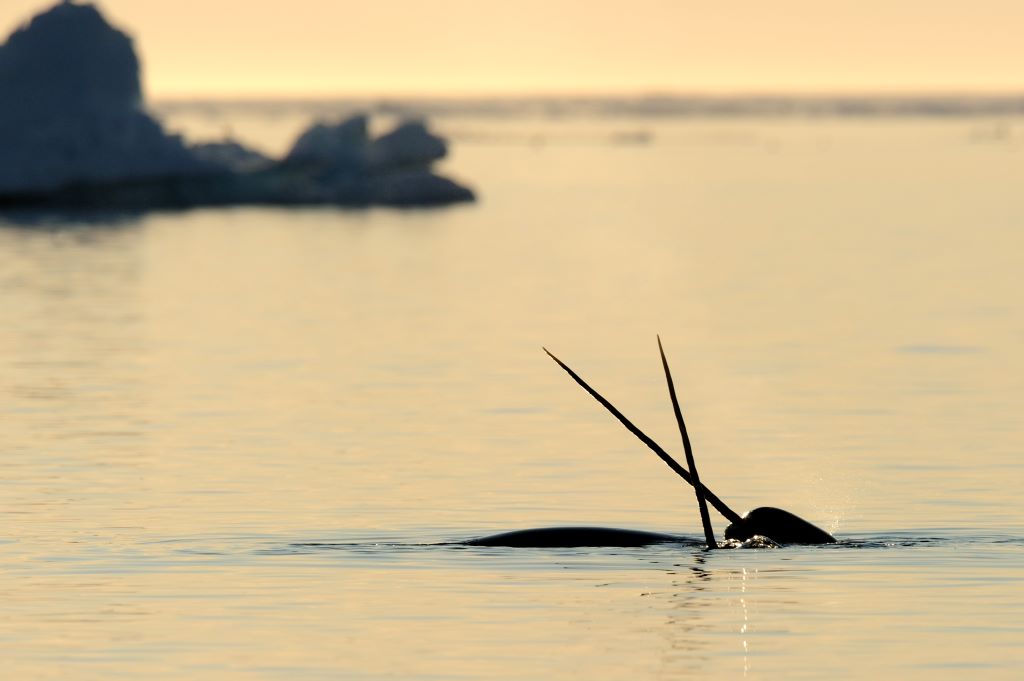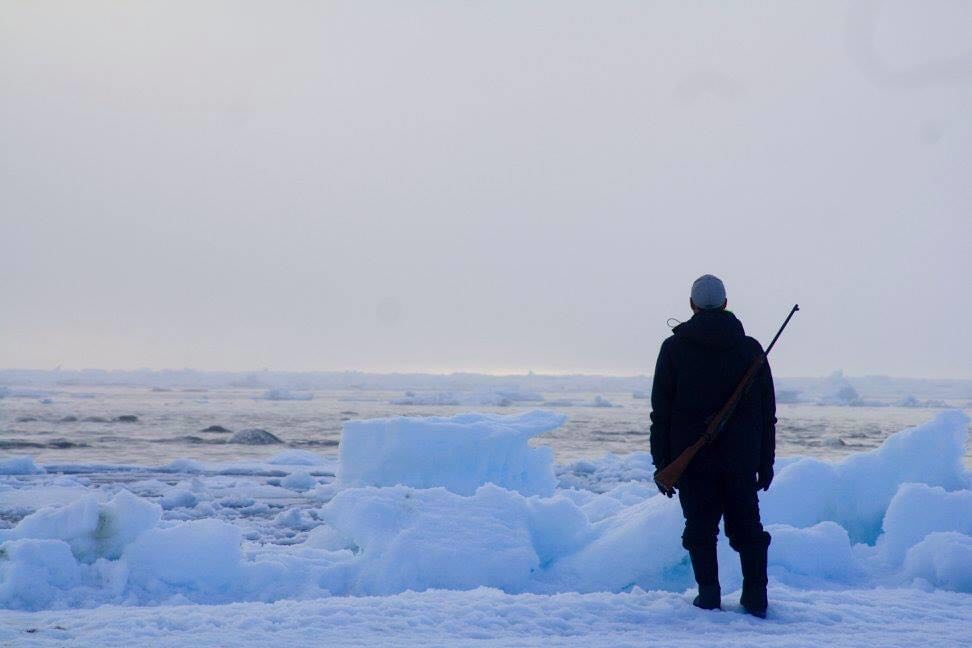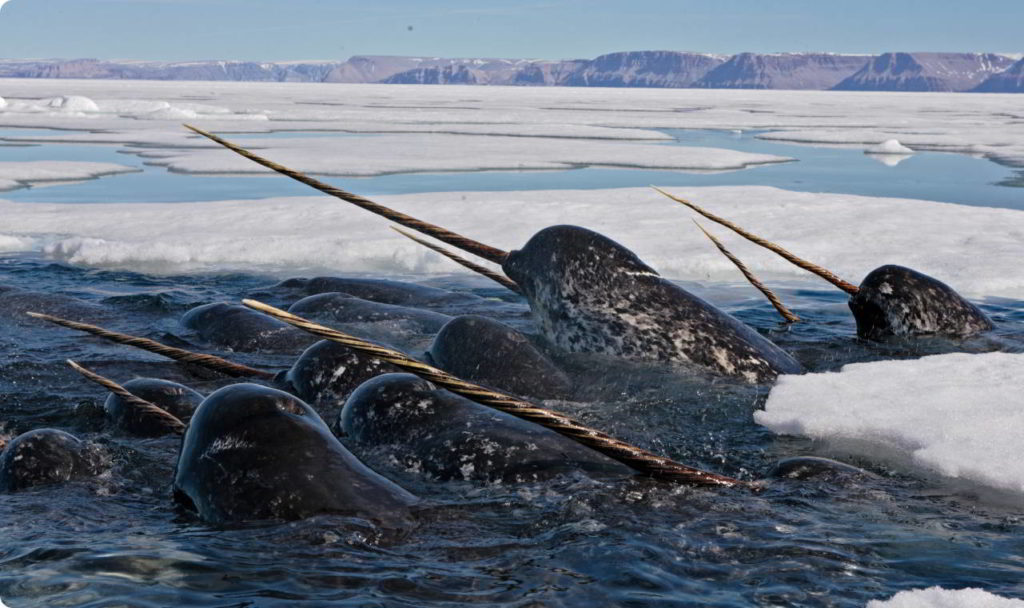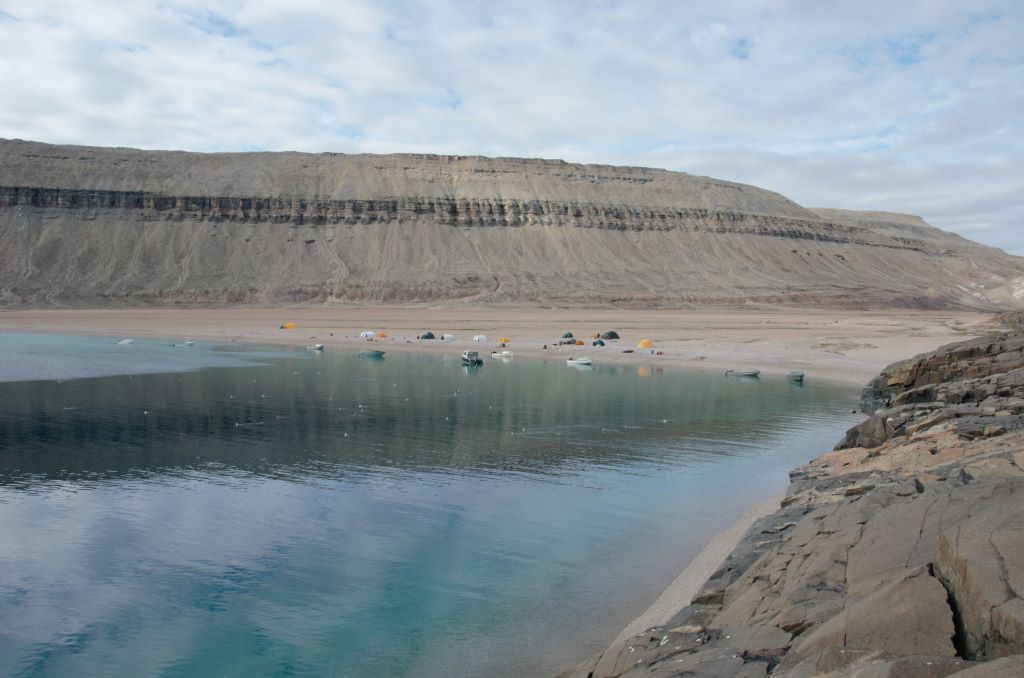Growing up with narwhal

“I was nine-years-old when I saw my first narwhal,” Max Kalluk, now 33, tells Brandon Laforest, WWF-Canada’s Arctic species specialist. It wasn’t just one, though. “Hundreds of pods of narwhal came to town,” he says, still marveling over that exciting three-day stretch.
That town was Arctic Bay, an Inuit hamlet in the northwest corner of Baffin Island. The floe edge surrounding Arctic Bay is one of the most bountiful wildlife areas in the Arctic and the local residents rely on narwhal for sustenance, income and art. Every summer, narwhal and beluga migrate through the area, feeding on local cod.
Kakiak Point, situated across Admiralty Inlet in Arctic Bay, is one of the areas where Kalluk harvests narwhal. Over the years, he’s seen more and more killer whales in the area — and they seem to be sticking around.

But orca aren’t the only threat to narwhal. Kalluk explains that the people of Arctic Bay and Pond Inlet worry about the impacts of the shipping industry.
“The mining company in Baffinland often sends out four or five ships a day and I think it has had an impact on the way the narwhal choose their route. I’ve noticed in Pond Inlet they are starting to go to the shoreline more to avoid the ships.”
For narwhal, the shoreline is a safe place. When they are scared — of people, ships or even killer whales — narwhal move closer to the shore. They also come to the shore to feed. It’s a sight that leaves Kalluk in awe, every single time.
“When I look at narwhal, I often think back to the first time I saw them feeding on the shore,” he recalled. “It was really amazing. Quite a spectacle! They would put their fluke [tail] half-way up in the air while keeping their heads underwater. It’s like they were trying to balance themselves underwater. Then they started to swim upside down while feeding effortlessly.”

Like most locals, Kalluk learned about narwhal from his elders. “My grandfather told me many times not to harvest the first narwhal I see and to leave the females and the calves alone.”
Kalluk’s grandfather also taught him that narwhal have fantastic eyesight and incredible hearing and that if they let the females, calves and leaders pass, the remaining narwhal feel safe returning to the area. By only taking what they need, local harvesters work to keep the narwhal population healthy and thriving.
Kalluk has also learned plenty from the species itself. “We are so used to seeing them all the time, we’ve learned their habits and details,” he says, adding that he’s come across many female narwhal with tusks even though it’s primarily a male characteristic. He explains that it’s not the tusks that help identify the gender of the mammal, but other bodily characteristics like colour and size. “As they age, they become whiter. Sometimes we see older narwhal with short tusks, and we know that she is female.”
We actually met Kalluk during our first #WildlifeWednesday on Facebook Live that Brandon Laforest was hosting on narwhal. Kalluk was such an active commenter that he was answering questions even before we could and interacting with all the people online. He was so eager to share his knowledge on narwhal and all Arctic species that we just had to reach out.

“Inuit have so much knowledge on Arctic animals, and most of the time we are left out of the conversation. I hope that more of this knowledge is shared with the world,” Kalluk says, noting that he’s probably encountered more narwhal than people over his lifetime. “I love narwhal and I want everyone to see them the same way I do.”
Five more fascinating narwhal facts from Kalluk:
- The longer they travel, the bigger narwhal tend to be.
- They take danger cues from harp seals who warn them when hunters are nearby.
- In addition to making a clicking noise, narwhal communicate through long distances by making a ghostly noise.
- They sleep often, but only in short bursts, and they continue to swim while sleeping!
- Narwhal surround their old and young to protect them. They are very social whales.

